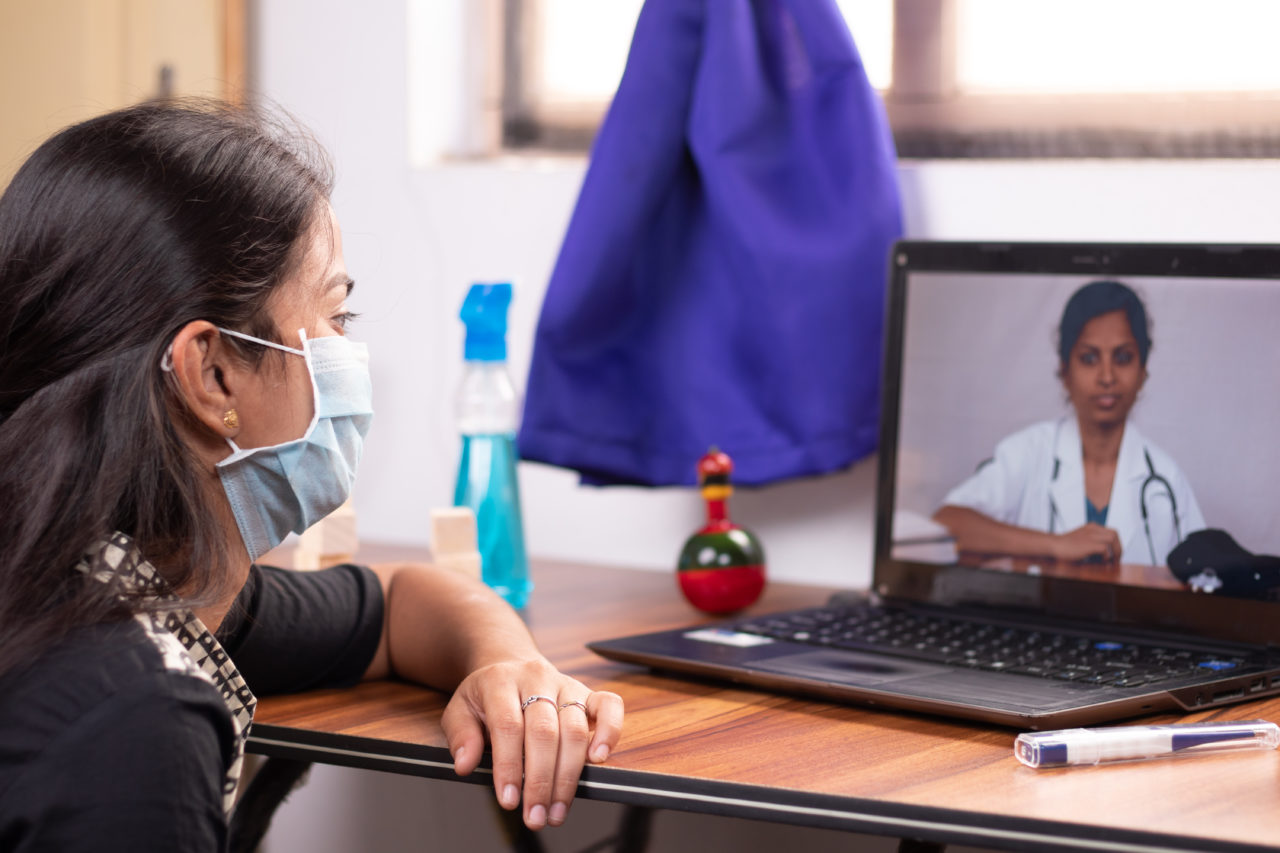

By Jennifer Meier
Research and Evaluation Associate
At a time when staying home and social distancing are the norm, many have sought medical care through their digital devices at some point during the pandemic. To restrict the spread of COVID-19, federal and state governments modified policies and regulations to broaden the provision of virtual health care services. In Texas, the state suspended a law limiting coverage for the provision of telehealth services by phone and issued an emergency rule requiring equal payment of remote services as for in-person services, expansion of covered platforms, and elimination of additional documentation requirements. These temporary regulatory and policy changes maintained continuity of care for patients, an essential component for people living with chronic health conditions.
Although COVID-19 has notably advanced the implementation of virtual health care, nearly 1.5 million Texans lack basic internet connectivity required to partake in a telehealth visit.
This technological gap becomes even more evident when looking at traditionally underserved populations such as rural, low-income, and racial/ethnic minority communities. For example, Federal Communications Commission (FCC) data reveals that many residential communities in rural Texas are limited to just one wired internet provider, and in some instances no provider, compared to non-rural communities that can have five or more internet providers. According to the Census Bureau’s five-year American Community Survey estimates, households making greater than $75,000 are more likely to have internet access (94%) than households making less than $20,000 (56%). Similarly, Hispanic/Latino (78%) and Black (80%) residents in Texas are less likely to have access to the internet compared to White residents (90%).
Findings from EHF’s recent COVID-19 in Texas survey report reveal that 22% of Texans were unable to access virtual health care services because they lacked internet access to talk to a doctor; did not have a computer, tablet, or smartphone with internet access; or did not know how to talk to a doctor online. One out of five Texans living in rural areas reportedly do not have a device with internet access, compared to just 11% of those residing in non-rural areas.
Loosening policy and regulatory restrictions during the COVID-19 pandemic has proven that expanding telehealth and telemedicine services offers a viable solution for increasing access to care. Moreover, a 2020 survey of Texas Managed Care Organizations found that a majority of Medicaid health insurance plans believe these telehealth policies should be extended beyond the pandemic. More than 60% of the plans surveyed said that they would like the Texas Health and Human Services Commission to maintain the use of telemedicine for service coordination activities. As policymakers, funders, and key stakeholders examine the future of virtual healthcare services in Texas, consideration should be given to the permanency of the policies enacted because of COVID-19.
Yet, addressing telehealth through policy and regulatory channels is just one part of the solution. Attention needs to be drawn to the digital disparities that persist among rural, low-income, and racial/ethnic populations. Specifically, early indications show that a lack of connectivity is affecting Latino, Black, elderly, and low-income individuals from accessing vaccination appointments.
Future efforts should focus on building broadband capacity, increasing the affordability of and access to internet services, and educating Texans about these services. In his recent State of the State address, Governor Greg Abbott announced his intentions to make expanding broadband internet access an emergency item for the current legislative session. By implementing innovative telehealth policies and strengthening connectivity across the state, the state can move the needle toward better health outcomes for all Texans.